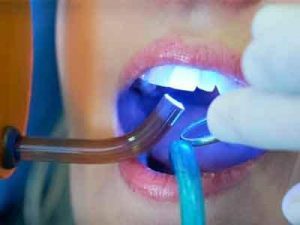- Home
- Editorial
- News
- Practice Guidelines
- Anesthesiology Guidelines
- Cancer Guidelines
- Cardiac Sciences Guidelines
- Critical Care Guidelines
- Dentistry Guidelines
- Dermatology Guidelines
- Diabetes and Endo Guidelines
- Diagnostics Guidelines
- ENT Guidelines
- Featured Practice Guidelines
- Gastroenterology Guidelines
- Geriatrics Guidelines
- Medicine Guidelines
- Nephrology Guidelines
- Neurosciences Guidelines
- Obs and Gynae Guidelines
- Ophthalmology Guidelines
- Orthopaedics Guidelines
- Paediatrics Guidelines
- Psychiatry Guidelines
- Pulmonology Guidelines
- Radiology Guidelines
- Surgery Guidelines
- Urology Guidelines
Scientists uncover key new molecules that could help to tackle tooth loss and regeneration

The study, led by the Universities of Plymouth and Geneva, shows how a *signalling pathway called Notch, which is known to be activated in stem cells and cancer, is important for periodontal ligament development.
New research published in the Journal of Dental Research has shed light on the science behind the formation of the periodontal ligament, which helps keep the tooth stable in the jawbone. This improved understanding will also help scientists work towards regenerating the tissues that support teeth.
*A signalling pathway describes how a group of molecules in a cell work together to control one or more cell functions, such as cell division or cell death. After the first molecule in a pathway receives a signal, it activates another molecule. This process is repeated until the last molecule is activated and the cell function is carried out.
Abnormal activation or inhibition of certain signalling pathways can lead to cancer and other conditions, including problems with tissue regeneration.
A key finding in the new study, which was conducted in rodent teeth, is that Lamin A, a cell nuclear protein, is a direct target of Notch pathway.
Lamin A is best known for its mutated form progerin, which causes fatal ‘early ageing’ disease, Progeria syndrome – but by uncovering its involvement in periodontal ligament formation, scientists have better insight into how molecules function during tissue regeneration, and how the process could be affected during disease.
Corresponding author Dr Bing Hu, Associate Professor of Oral and Dental Health Research in Peninsula Dental School at the University of Plymouth, said: “The periodontal ligament starts to properly hold the tooth in the jawbone when a tooth breaks out and becomes functional.
“Understanding the mechanisms of how periodontal ligaments develop and the molecules that assist the tissue becoming mature is really important for our understanding of tissue regeneration and repair.
“The next steps are for us to see if and how the molecules we have identified in this study can be translated into a human-only model and, in turn, how they are affected in both healthy and diseased conditions.”
Dr Hu is also part of the University’s Institute of Translational and Stratified Medicine (ITSMed).
This research is a part of the MD-PhD thesis of Dr Balázs Dénes of the University of Geneva, entitled Post-emergent tooth eruption: eruption rate, periodontal ligament maturation and cell signalling, directed by Professor Stavros Kiliaridis.
Dr Dénes said: “We believe that our findings are an important stepping stone to better dental treatments in situations involving the periodontal ligament, such as gum disease (periodontitis), tooth restoration by dental implants or orthodontic tooth movement.”
For further reference log on to :

Disclaimer: This site is primarily intended for healthcare professionals. Any content/information on this website does not replace the advice of medical and/or health professionals and should not be construed as medical/diagnostic advice/endorsement or prescription. Use of this site is subject to our terms of use, privacy policy, advertisement policy. © 2020 Minerva Medical Treatment Pvt Ltd